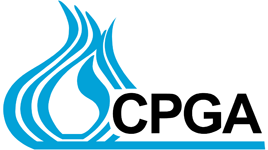
About 97% of propane is made in North America, and 90% of that is made in the USA, which means that this versatile fuel really is America’s own energy source.
Propane is clean and environmentally friendly in its unused state. It is not harmful to soil if spilled, nor will it cause harm to drinking water supplies. Propane vapor will not cause air pollution and is not harmful if inhaled by birds, animals, or people.
Propane exhaust contains emissions that exceed the requirements for clean fuel vehicles and surpasses all eco-friendly requirements. In fact, propane is not considered a greenhouse gas at all. Most propane fueled vehicles are certified by the Environmental Protection Agency (EPA) as meeting the Ultra Low Emission Vehicle standards. On top of that, the U.S. government energy policymakers and energy administrative bodies have listed propane as an approved clean fuel.
According to the most recent national average fuel prices from the U.S. Department of Energy, it would cost twice as much to operate your range, water heater, dryer, or furnace with electricity as with propane gas.


1. Lower the Thermostat: Each degree you lower the thermostat on your heating system decreases your fuel bill by 3 percent. Going from 72°F; down to 68°F doesn’t matter much in terms of comfort, but it can save up to 12 percent on your heating bill. Cost: $0
2. It’s Closed-Flue Season; Minimize Those Romantic Fires: An open fireplace damper lets the same amount of heated air escape up the chimney as a wide-open, 48-inch window lets out. Make sure your flue is closed when you don’t have a fire going. In fact, it is a good idea to reduce the number of times you use your fireplace. A roaring fire exhausts over 20,000 cubic feet of heated air per hour to the outside. Sure it feels warm by the fire, but every Btu that goes up the chimney is replaced by cold air pulled into the house elsewhere. Cost: $0
3. Move Furniture Away from Vents, Registers, & Radiators: This sounds like a no-brainer, but many times a couch, chair or bed moved during the summer stays there in the winter, blocking the flow of the heat into the room. This wastes money and leads to cold rooms. With a forced-air system, blocking a supply or return vent can cause a house-wide pressure imbalance that disrupts the heat flow in the whole system. Cost: $0
4. Adjust Your Water Heater: You use more hot water in winter. Lower the water heater temperature from 140°F to 120°F and take showers, not baths. According to the U.S. Department of Energy, the average bath consumes up to 25 gallons of hot water, while a five-minute shower uses up much less – only around 10 gallons. Equipping your showers with low-flow showerheads also dramatically reduces the consumption of water, both hot and cold. Cost: $0
5. Work the Drapes: Got drapes or curtains that block sunlight? Open them during the day to get free solar heat (make sure windows are clean) and close the curtains just before sunset. Also, consider insulating curtains (around $100 per window). As a general rule, each square foot of window that you insulate saves about 1 gal. of oil or nearly 1.5 cubic feet of gas a year. This means that insulating curtains pay for themselves in around seven years, to say nothing of the added comfort. Cost: $0
6. Change Your Furnace Filter: If you have a forced-air system, changing the furnace filter can save you some energy (up to 5 percent) and keep dust down in the house. The system will last longer and be less likely to break down. The most popular 16 x 20-inch duct filter costs around 50 cents when bought by the box. Change them monthly during heating season. Measure your air filter before shopping; they range in size from 12 x 12 inches to 30 x 30 inches. An alternative to swapping out the replacement filter is to use washable filters (around $20 each). With care, they can last five years. Cost: Under $15 per year


